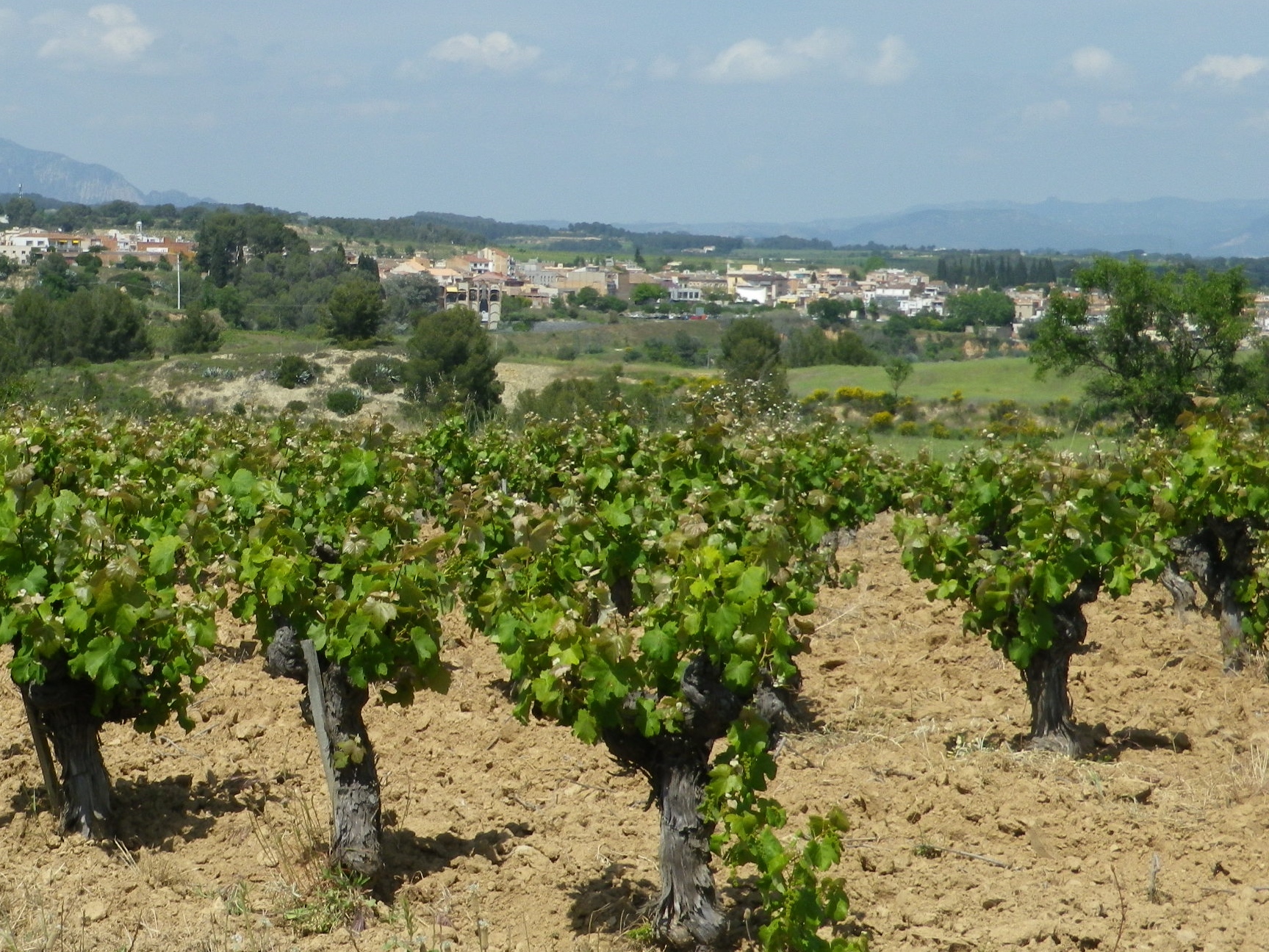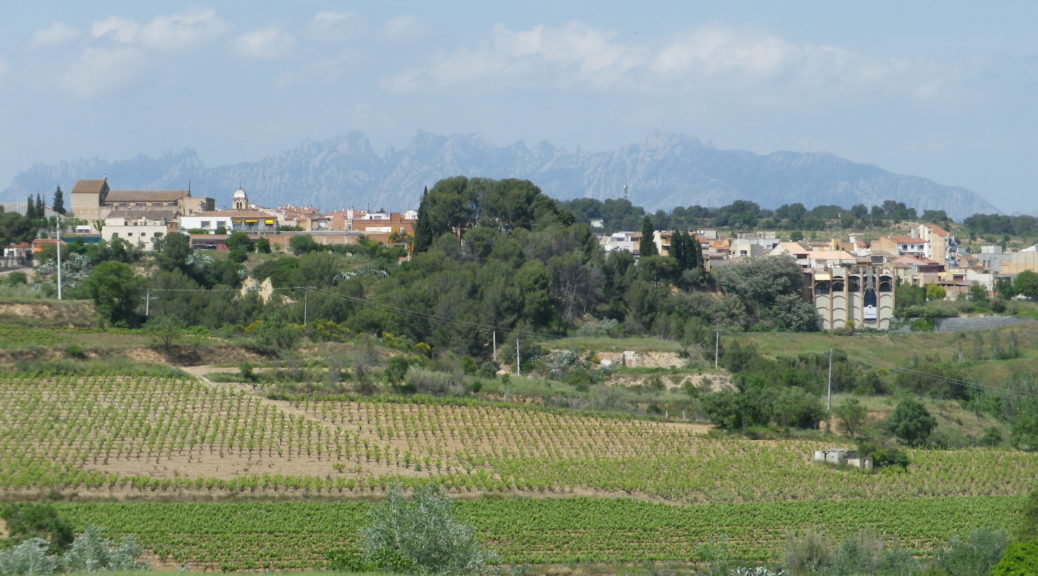While Barcelona is the political capital of Catalonia, its cava capital is Sant Sadurni d’Anoia. This small town in the hills behind Barcelona is as devoted to cava as fans of sparkling wine are devoted to cava. Thus, the trail through the area around this town encountered plenty of wineries and vineyards, in a very rural area not far from Barcelona.
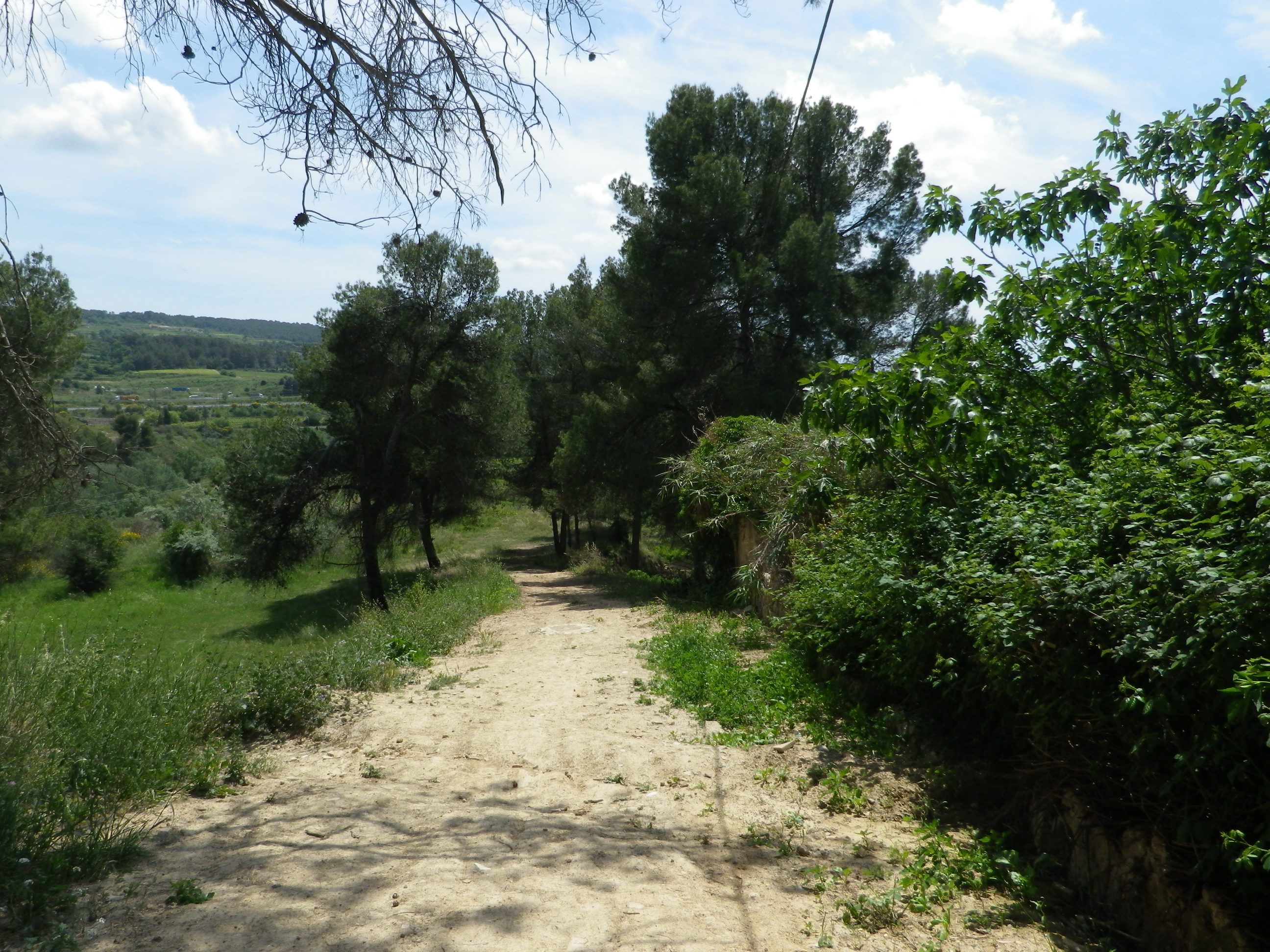
I began this trail from the train station in Barcelona. The train ride to Sant Sadurni was super easy from Barcelona. Not only that, but a special deal includes round-trip ticket with a tour of the Freixenet sparkling wine facility, which happens to be right next door to the station. So, after the informative tour, and the free tasting, I headed out on the trail.
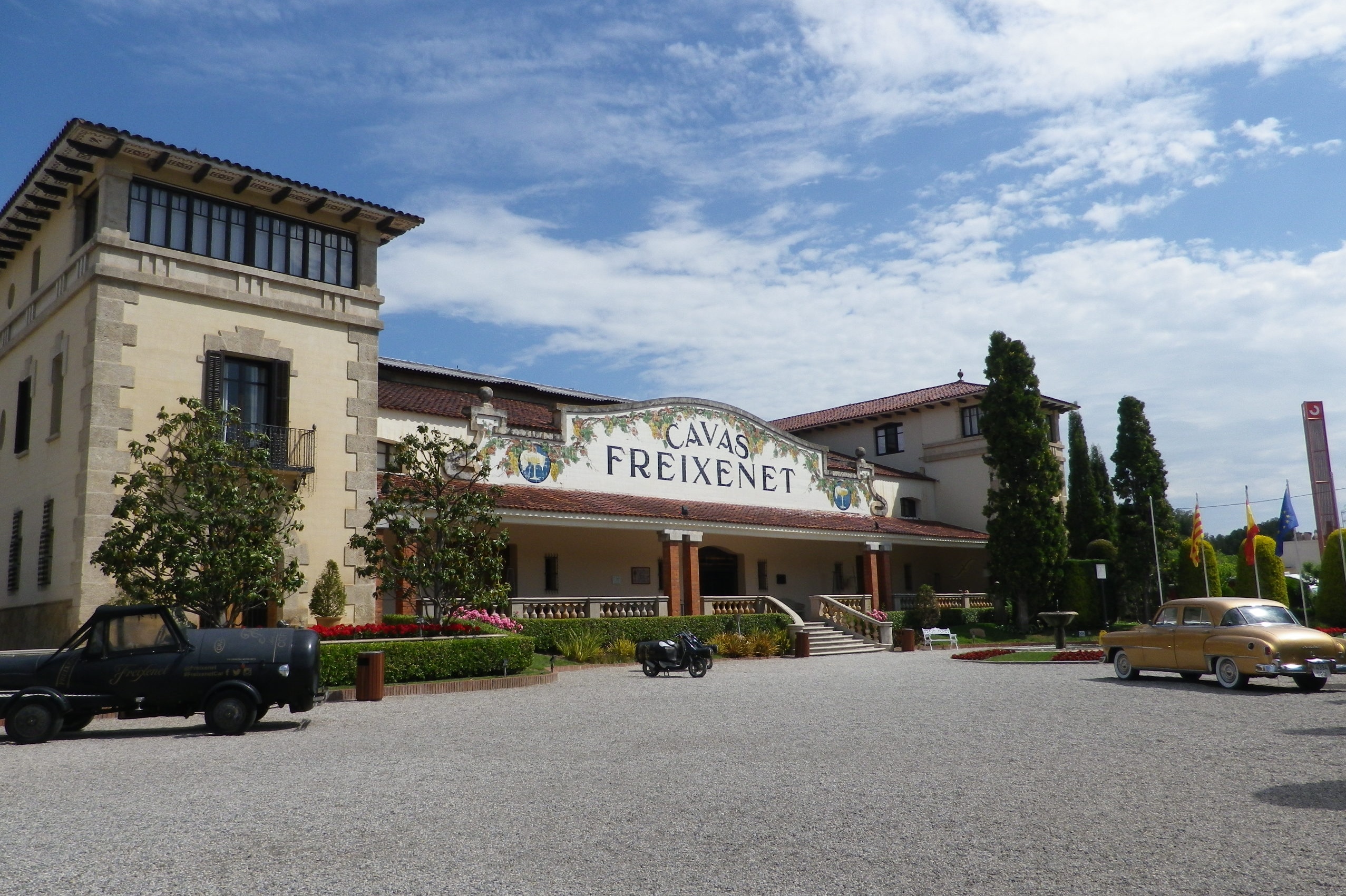
This short and very easy trail initially meandered through the small town, which provides plenty of opportunities to sample more cava, as it passes many wineries on the outskirts of the town. Then it reaches the vineyards, set in amazing geology. This part of the world is dry, for the most part, yet can experience torrential downpours. Portions of this trail follow or parallel what appear to be arroyos, dry channels eroded by water over time, leaving a visual record of the geological history of the area. (Not for the first time, I found myself wishing I had taken a geology class.)
Luckily, although May is one of the rainy months of the year here, the week had apparently been quite dry. In fact, relentless sun, and the heat (even in early May) were the issues that day. Consequently, the trail, which might have been difficult to traverse in places following a heavy rain, was clear; and I came to realize that following this trail in mid-day in July or August would have been foolhardy. Not surprisingly, the vines were in full leaf. (Germany and northern France would require at least another couple of weeks before that happened there.)
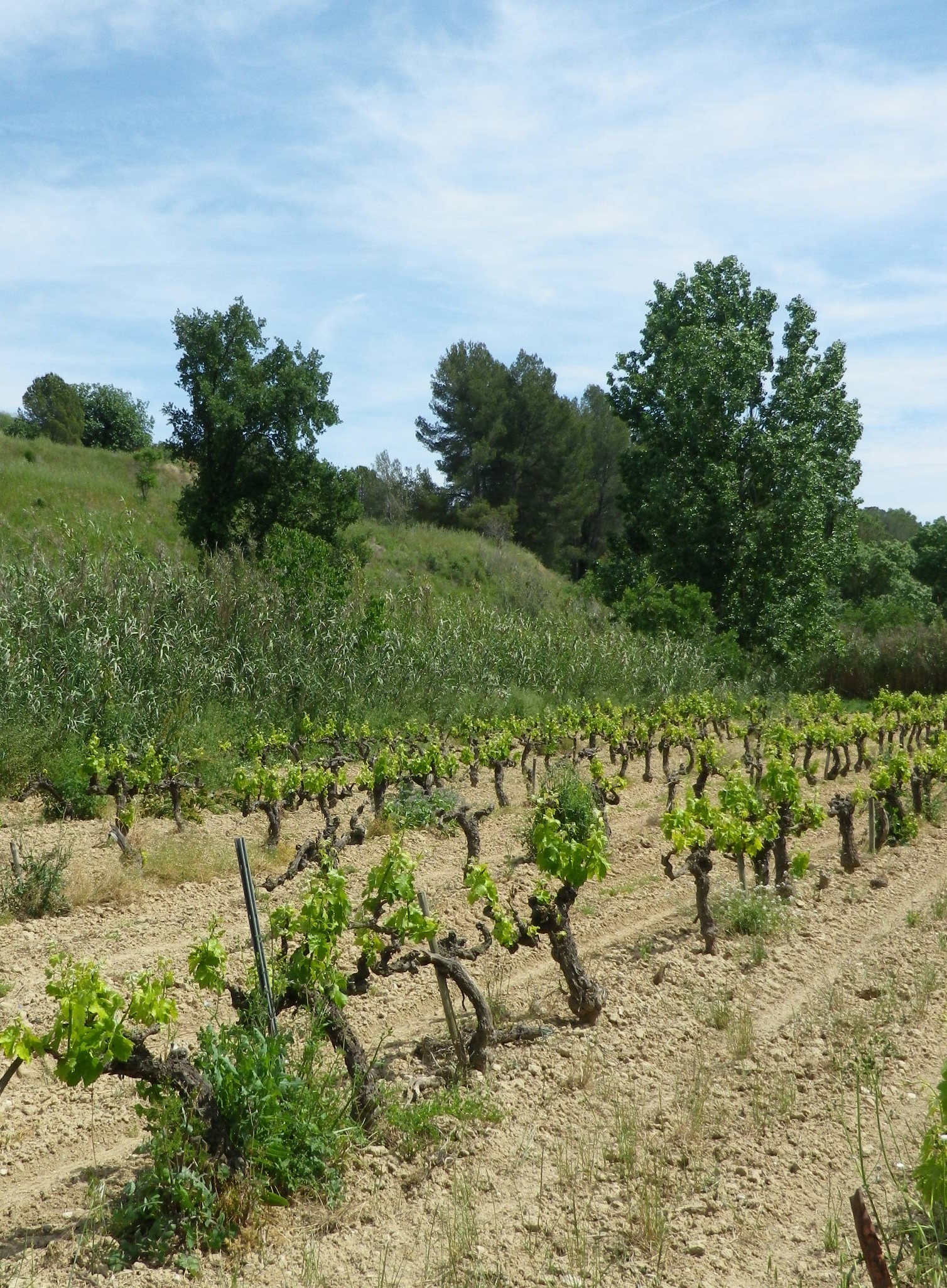
Reaching the little settlement of Can Batista marked the return of the trail. Set in a bit of a hollow, there was a small green space with a picnic table, under trees at the entrance to the hamlet. It was a quiet spot to take a break. Continuing onward, I expected, and got, more vineyards for my efforts. What I did not expect was the dramatic view of the massive, vertical walls of Monserrat, its outlines looking for all the world like jagged saw teeth. Monserrat, the mountain range, has in its heights the Monastery of Monserrat, home to the Virgin of Monserrat, a patron saint of Catalonia. For most Catalans, this impressive mountain, with its historic monastery containing one of Catalonia’s oldest cultural icons, is a tremendously important, even holy, site. Seeing it from this perspective on the trail, was even more impressive than seeing it from Barcelona.
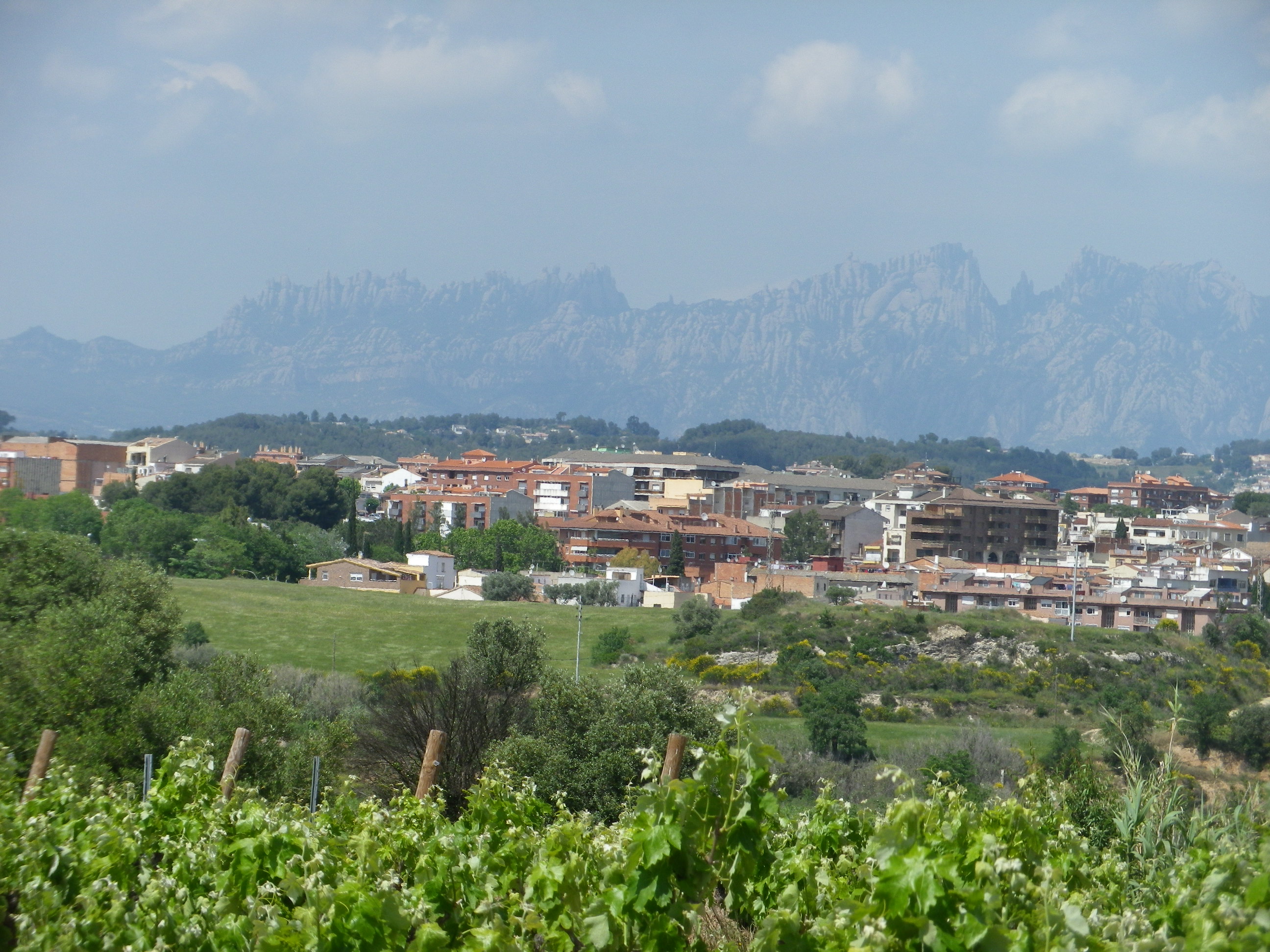
The trail re-entered the town passing by lush, green vegetation near the old farm house of Can Mas de la Riera. The Freixenet and the Gramona wineries on the cliffs flanking either side of the trail. Climbing up to them was not an issue, as the promise of some chilled cava lay up in them, and in the numerous other wineries in town, (not the least, the Codorniu, the oldest cava winery in all of Spain) where cava is celebrated, and the celebrations continue to this day.
